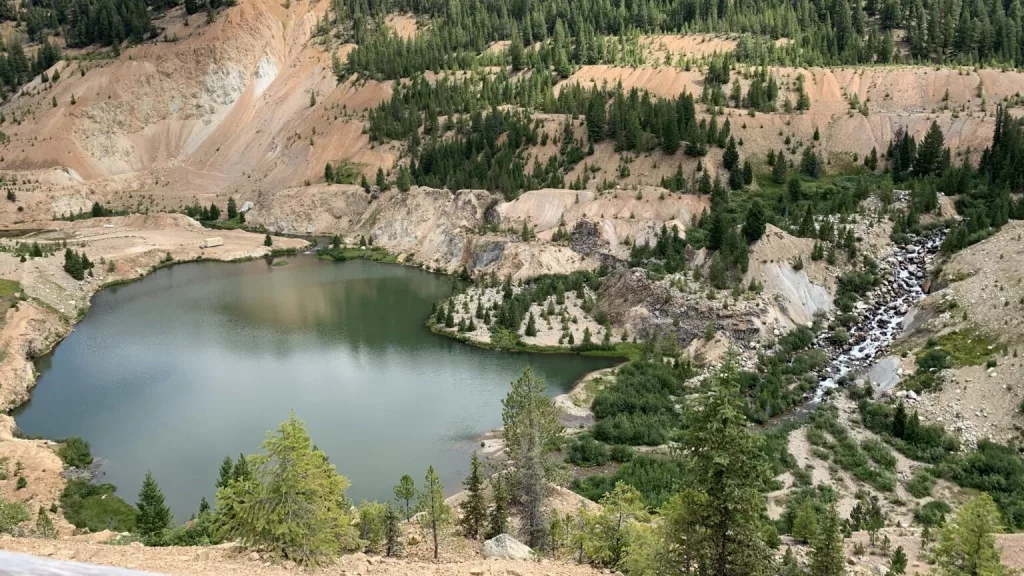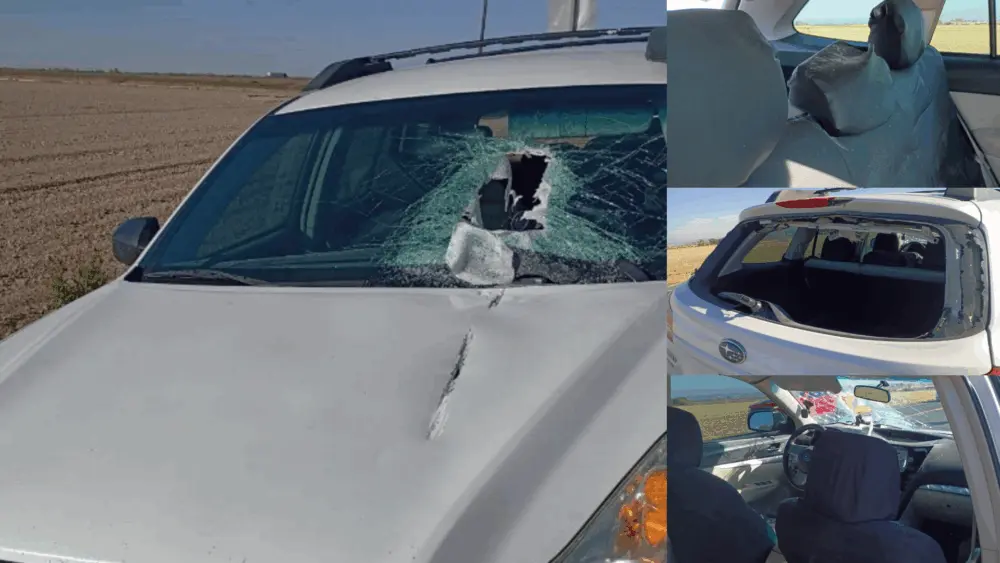MCCALL, ID – Officials with Perpetua Resources announced Tuesday they broke ground on early construction for the Sibnite Gold Project located just outside the border of the Frank Church River of No Return Wilderness in central Idaho.
Located in the Payette National Forest in Valley County near the small town of Yellow Pine, Stibnite Gold Mine has been the site of mining since around 1899. Mining continued through the 20th century and produced metals used by America during World War II.
However, mining ceased by the 1990s and Stibnite was abandoned, leaving arsenic and sediment pollution in the East Fork of the South Fork of the Salmon River, which is an important habitat for endangered salmon, the Idaho Capital Sun previously reported.
Several conservation groups and the Nez Perce Tribe, which have opposed the mine for years, say the new plans for the mine will cause even more harm to the environment, put the public at risk and harm salmon.
Mine’s owner, Perpetua Resources, say Stibnite is unique source of antimony
A company called Perpetua Resources, which was formerly known as Midas Gold, bought the old Stibnite mine site and plans to resume mining for gold, silver and the chemical element antimony at Stibnite.
“Today, we break ground on the Stibnite Gold Project,” Perpetua Resources President and CEO Jon Cherry said in a written statement issued Tuesday. “As America’s answer to China’s antimony export bans, we are focused on swiftly and safely bringing our antimony and gold project into development. After nine years of permitting, Stibnite can once again serve this country’s national interest. We are proud of our work to bring this essential project online to provide critical resources while restoring an abandoned mine site. With our reclamation performance bond to reclaim the work we undertake at the Project site in place, we officially started early works construction today and are making good on our promises to Idaho and America.”
Perpetua Resources officials have told the Sun that Stibnite represents a unique source of antimony in America, and that antimony can be used in making batteries and ammunition.
But the mine’s opponents have said the real crux of the mine – as reflected in the name Stibnite Gold Project – is gold.
Perpetua Resources executives said they expect the project to create up to 950 jobs during construction and 550 jobs during mining operations.
Overall, Perpetua Resources said the permitting process took nine years and their team has followed all of the required steps and laws.
Conservationists say real construction, operations can’t start until legal challenges resolved
In January, the U.S. Forest Service issued a final record of decision approving the Stibnite Gold Project, but the Idaho Conservation League, the Nez Perce Tribe and other conservation groups have filed lawsuits challenging and appealing the approval, arguing that the U.S. Forest Service failed to consider the project’s impacts on fish, wildlife and the environment and on the air that members of the public and mine workers breathe.
Two officials with the Idaho Conservation League, Regulatory Conservation Associate Will Tiedemann and Public Lands and Wildlife Director John Robinson, told the Idaho Capital Sun on Wednesday that there are at least four active lawsuits or appeals challenging Stibnite’s approval.
They described Tuesday’s groundbreaking as a limited, preliminary groundbreaking and said real construction and operations could not begin unless or until the legal challenges are resolved.
“There are significant questions as to will this mine ever happen or not,” Tiedemann said Wednesday.
Perpetua Resources officials say that a major portion of their plan involves cleaning up some of the legacy pollution and waste left by the previous operators of Stibnite Gold Mine. Perpetua Resources officials have also promised to build a fish passage tunnel that would reroute the East Fork of the South Fork of the Salmon River away from the Yellow Pine Pit, which now blocks the fish in.
“The Stibnite Gold Project can deliver decisive wins for our communities, the environment, the economy and our national security,” Cherry, Perpetua Resources’ president and CEO, previously said.
But Tiedemann and Robinson said Perpetua Resource’s proposal is more about public relations and making money than actually helping salmon and cleaning up the environment.
Tiedemann and Robinson said Perpetua Resource’s plans call for disturbing an even larger section of the forest than the historic mine ever impacted and building 15 miles of new mining haul roads right on the border of the Frank Church River of No Return Wilderness. They also allege that air quality rules have been set aside or ignored for Stibnite.
“It’s safe to say this is one of the most pristine areas around, on the border of the Frank Church (wilderness),” Robinson said. “When you’re in the (site where the new mining road will be built), looking at the at the wildlife there, looking at the landscape, the undisturbed nature of it, the remoteness of it, it really is indistinguishable from the Frank Church, in terms of just the qualities of solitude there.”
“We’re hoping that through the legal system we’re going to be able to put a pause on the project and have it sent back to the drawing board to see if you can do it in a much better way,” Robinson added.
This story first appeared on Idaho Capital Sun.





